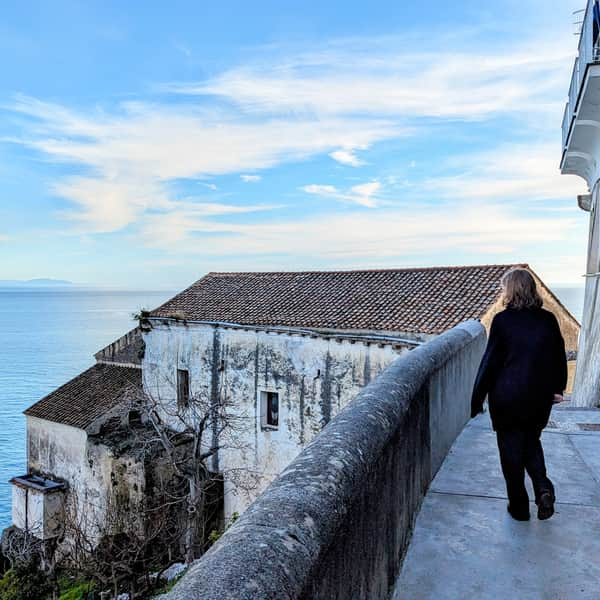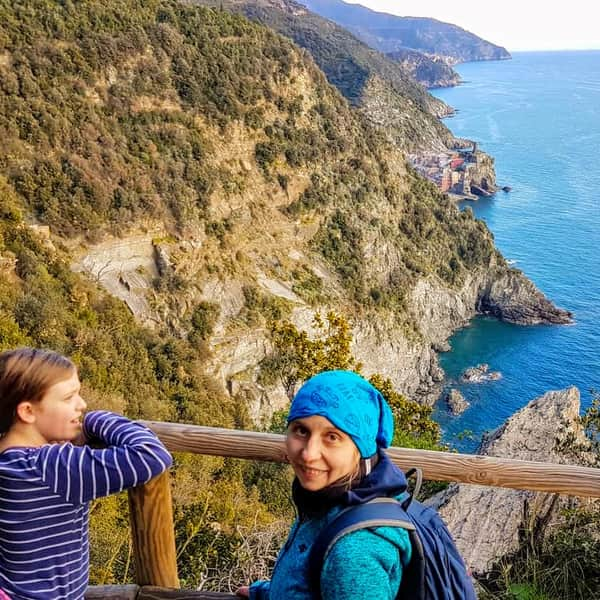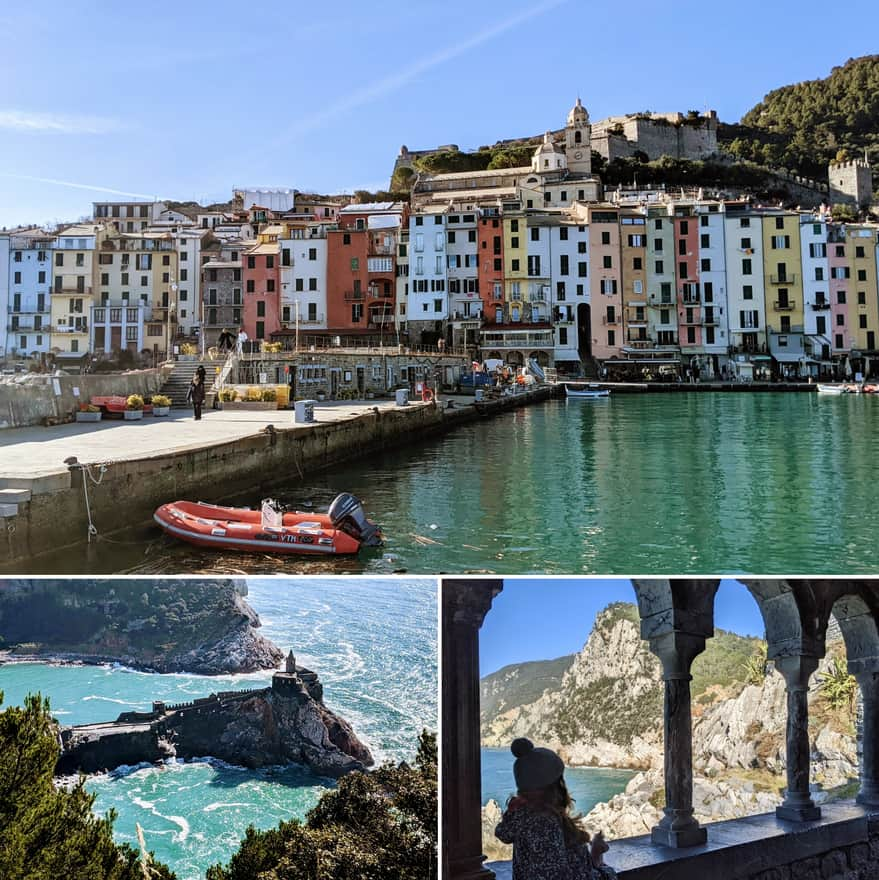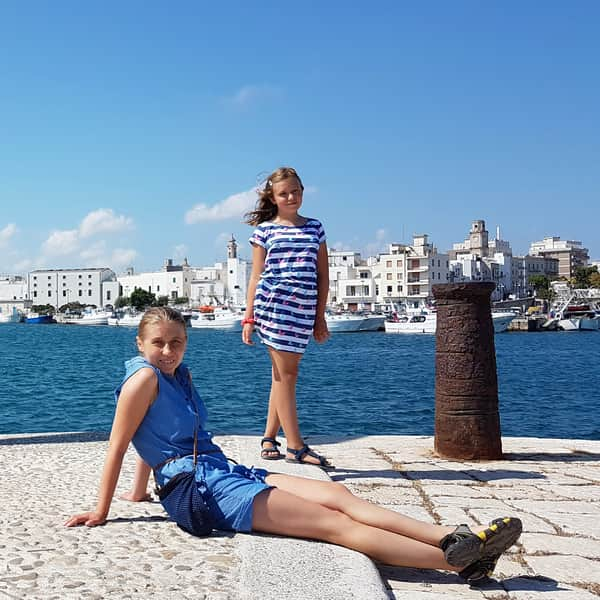
Monopoli - a gem of Apulia
Monopoli is a seaside town near Bari in the region of Apulia, with an extraordinary old town built of white limestone and marble, which looks like a postcard against the turquoise waters of the Mediterranean Sea!
We discovered Monopoli completely by chance, as until recently it was not well known among tourists - we simply came across information that when visiting the area near Bari, it is worth choosing Monopoli as a place to stay because:
- It is not as crowded as Bari and less touristy than the popular Polignano a Mare.
- It has a train station, so it is easy to reach both Bari and Polignano a Mare (just one stop away), as well as other tourist attractions in the area.
- The old town is charming and quite large, there is plenty to explore.
We liked all these points, and that's how we ended up in this extraordinary gem of the region - staying here was a perfect choice!
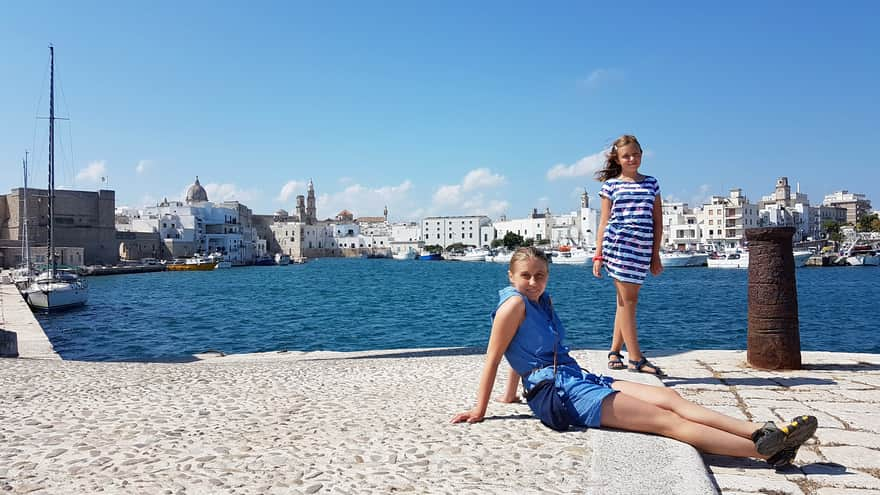
How to get from Bari to Monopoli?
Monopoli is about 40 km south of Bari. They are connected by a coastal railway line, making transportation between the two cities very convenient. Trains from Bari Centrale station to Monopoli take about 30 minutes, with departures approximately every half an hour. You can find the exact schedule on the website www.trenitalia.com. The train station in Monopoli is located about 1 km from the city center and the old town, which is about a 15-minute walk away.
Monopoli - what to see?
First and foremost, it is worth simply getting lost in the maze of narrow streets, among low buildings made of white stone, full of charming corners, atmospheric cafes, and restaurants.
Monopoli - the old town
Of course, the most beautiful part of Monopoli is the historical city center located near the Old Port. There are quite a few narrow streets and charming corners to explore. If you are looking for accommodation, be sure to choose a place close to the old town!
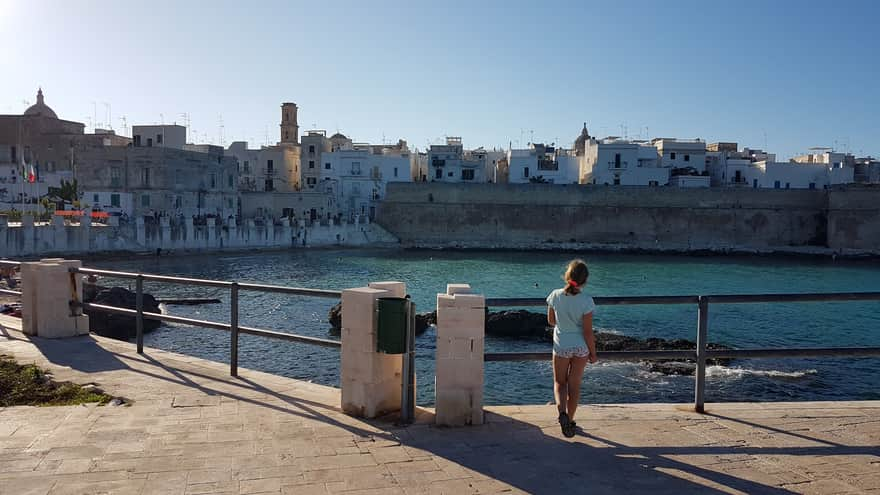
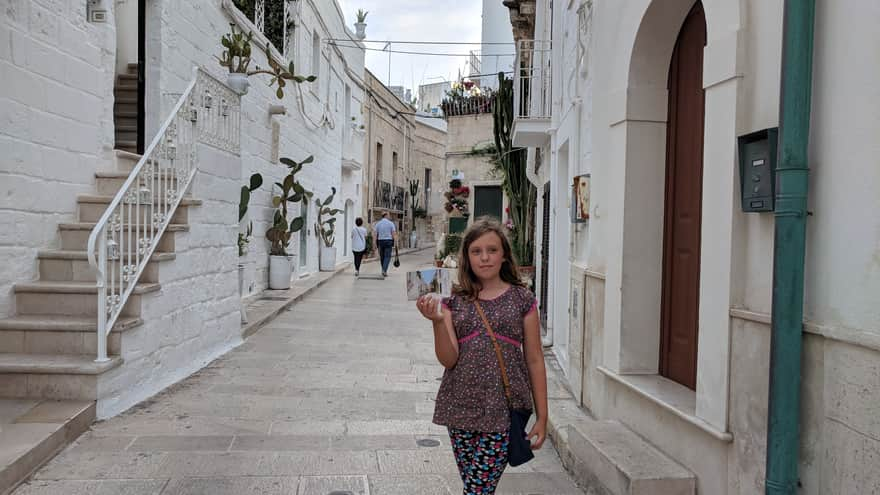
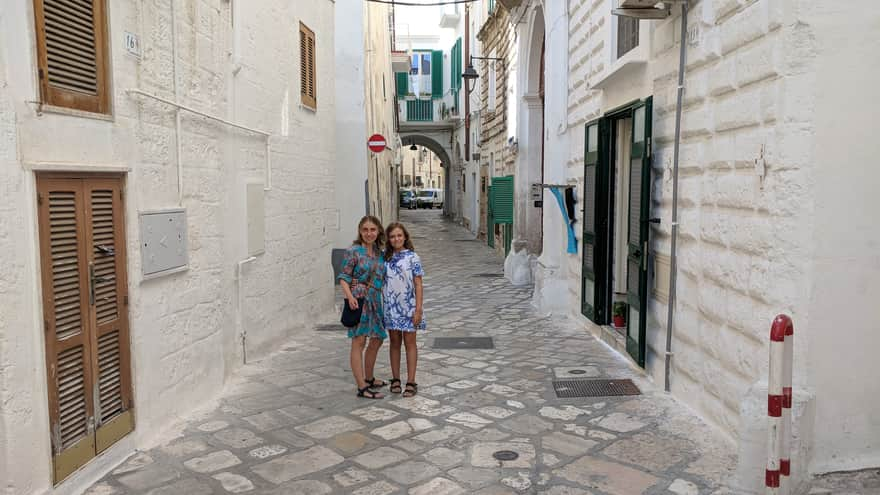
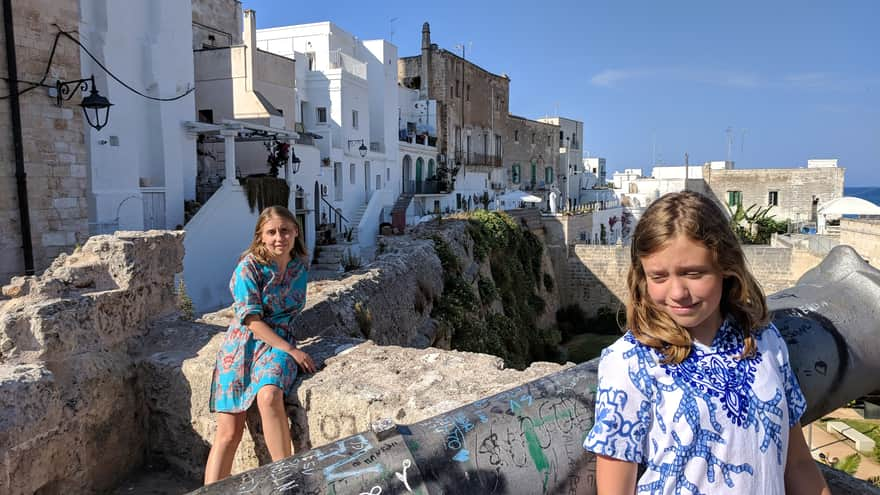
The Old Port (Porto Antico di Monopoli)
The small blue-colored boats called gozzi, which are used for fishing, octopus hunting, and coastal seafood gathering, are a characteristic symbol of the city and can be seen in many photos and postcards. Take a walk to the small white-red lighthouse located near the port - it offers a view of the old town.
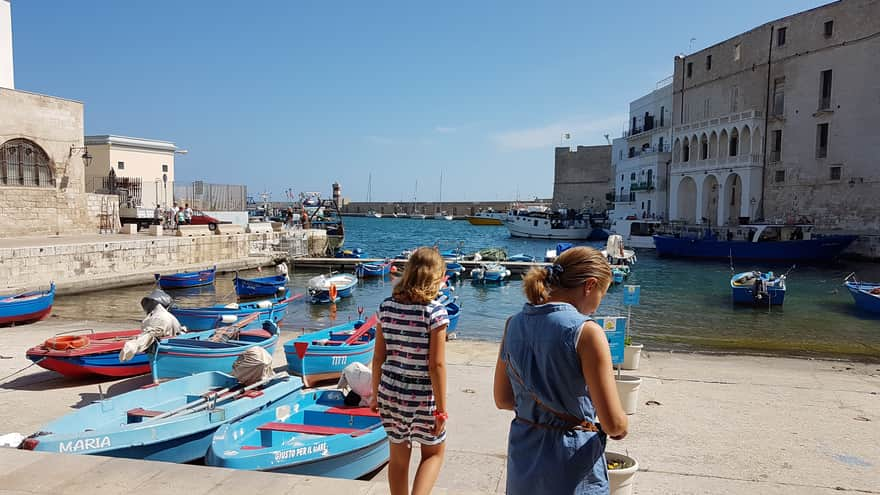
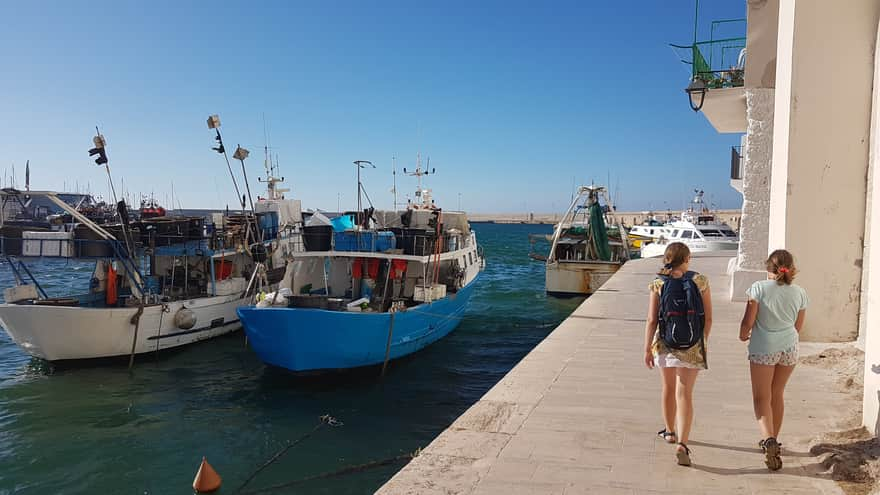
Castle of Charles V and the city gate
The Castle of Charles V (Castello Carlo V), located near the port, was a key element of the city's fortifications and protected the entrance to the port. The castle was built on a small cape called Punta Pinna. For a time, the castle served as a prison, but it was later abandoned. It has now been restored and serves as a venue for cultural events and exhibitions. Next to the castle, you will find the city gate - a historic gateway leading from the promenade to the old port.
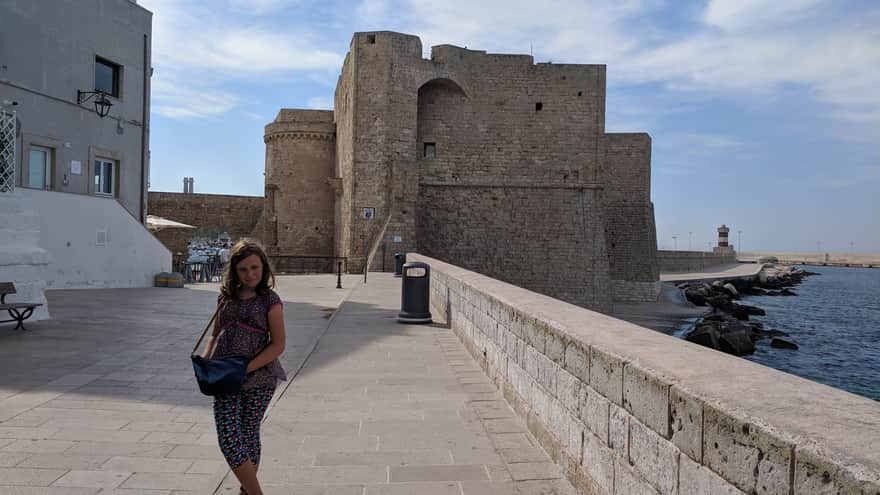
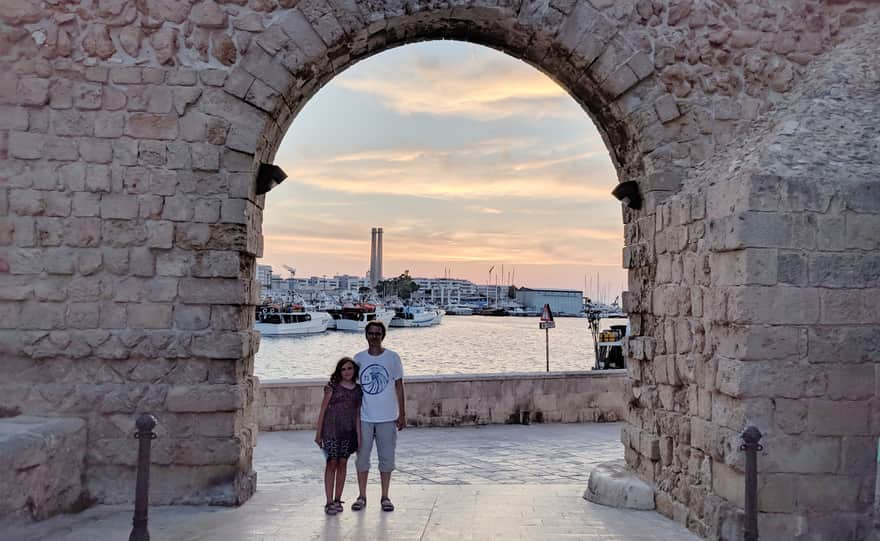
Cathedral of Monopoli
The Cathedral of Monopoli is the most important church in the city and has an interesting legend associated with it. When the beams that were supposed to support the church's roof ran out, the construction of the cathedral was reportedly halted in 1107. Ten years later, a wave washed ashore a raft with an icon of the Madonna. This was considered a sign, and the wood from the raft was used to complete the construction of the cathedral.
Today, it is one of the most beautiful churches in Apulia. In the 18th century, a wall was added to the right side of the church facade, supposedly to prevent the wind from blowing up the skirts of women going to church. On the wall, there are historic 16th-century statues that were previously located inside the church. Interestingly, some of the statues have deformations caused by lightning striking the altar in 1519.
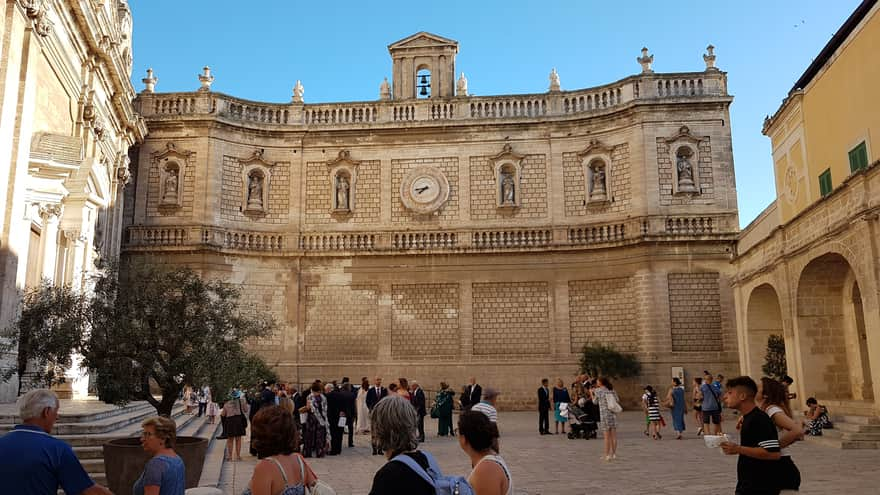
Purgatory Church and Mummies in Monopoli
In Monopoli, you can also visit one of the purgatory churches built in southern Italy and Sicily, where prayers were offered for the souls of the deceased who had sinned and had not yet received full forgiveness for their actions, so that they could go to heaven. The Church of Purgatorio (Church of the Most Holy Virgin Mary in Monopoli) is located right next to the cathedral. Although it does not match its grandeur, it catches the eye with its macabre images on the doors and the mummies displayed inside.
On the heavy wooden doors, you can see two skeletons. The engraved frames surrounding the doors are shaped like skulls. The symbolism of death, which greets visitors at every step, is meant to be a warning of the suffering of purgatory that awaits those who sin without repentance.
A somewhat macabre curiosity is the presence of eight mummified remains of the church's founders, displayed in glass cases inside the church. They are dressed in black robes framed with red fiery flames of purgatory. The mummies date back to the 18th and 19th centuries. There is also a mummy of a two-year-old child dressed in a white dress with ruffles - Plautilli di Francesco Indelli, who died around 1830.
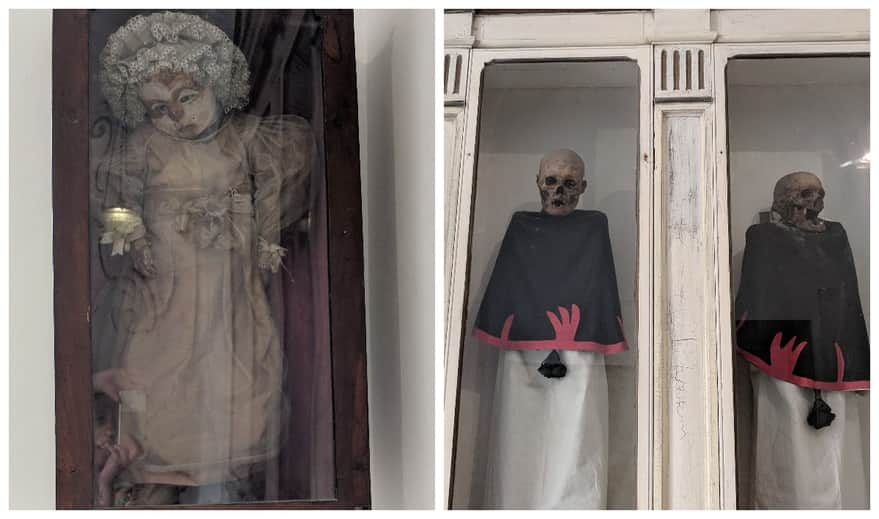
Pumo Amulet
While strolling around Apulia, you will come across the symbol of the pumo - a bud-shaped object surrounded by three leaves. It can be found on the tops of balustrades, in gardens... practically everywhere. It is believed to bring good luck. Apulian craftsmen have been making such amulets for centuries. Its name comes from the goddess Pomona and dates back to around the 1st century BC when ancient Romans arrived in the region of Apulia, bringing their culture and beliefs. The bud became a symbol of wealth, luck, and prosperity.
To make the amulet work, it is said that you must receive it as a gift and never buy it for yourself ;)
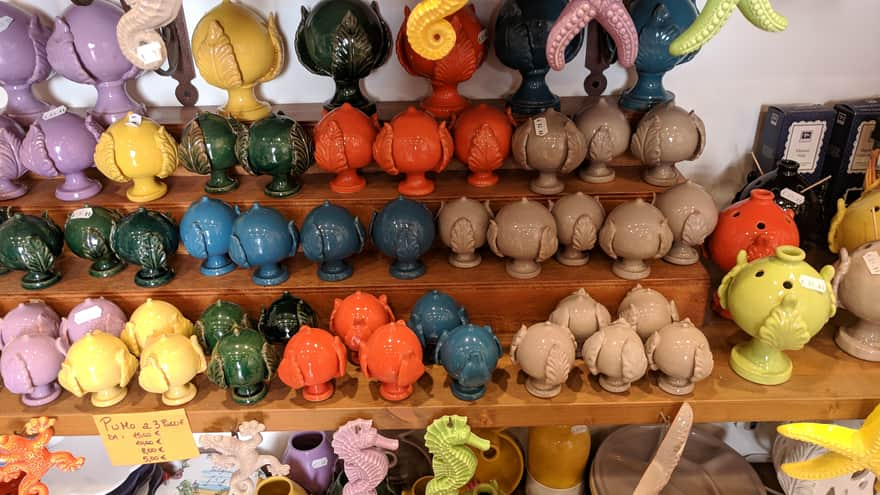
Monopoli - a walk along the southern coast
If you are staying in Monopoli for a longer period, it is worth taking a longer walk beyond the city along the southern coastline. The coast here is completely flat and rocky, with no designated trail, but there are plenty of well-trodden paths along the sea. You can reach numerous sandy beaches and coves and enjoy a view of the old town of Monopoli on the horizon.
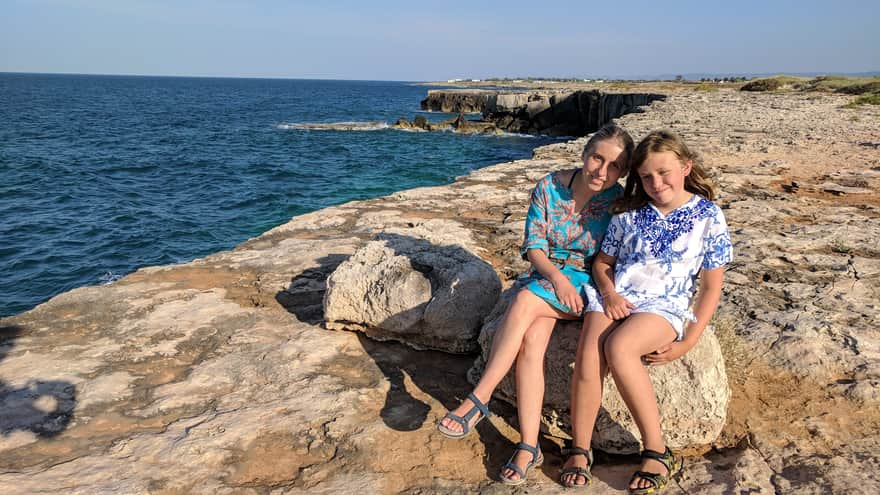
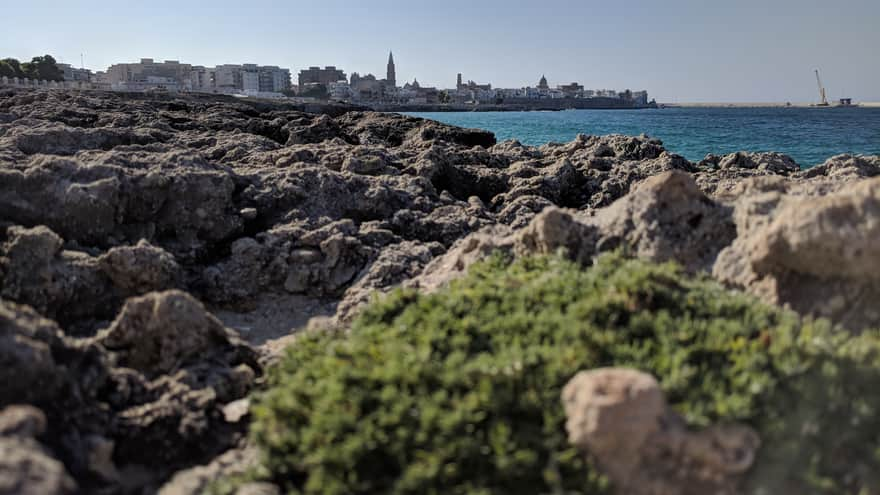
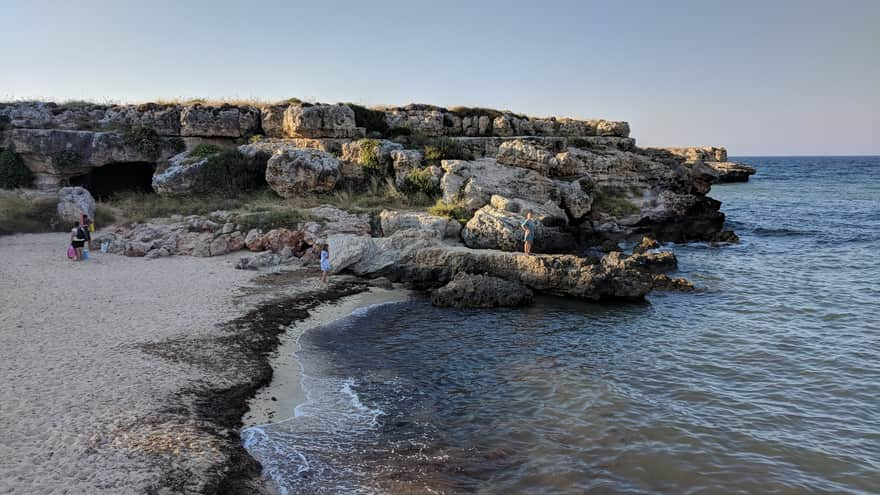
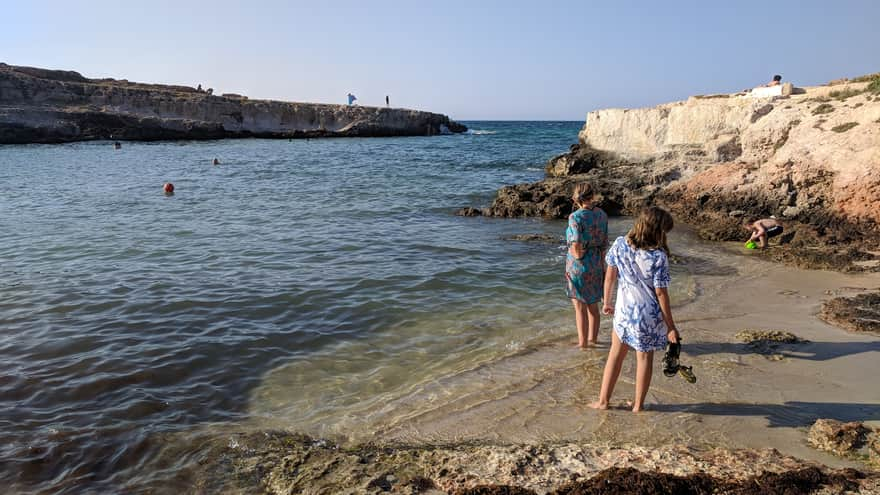
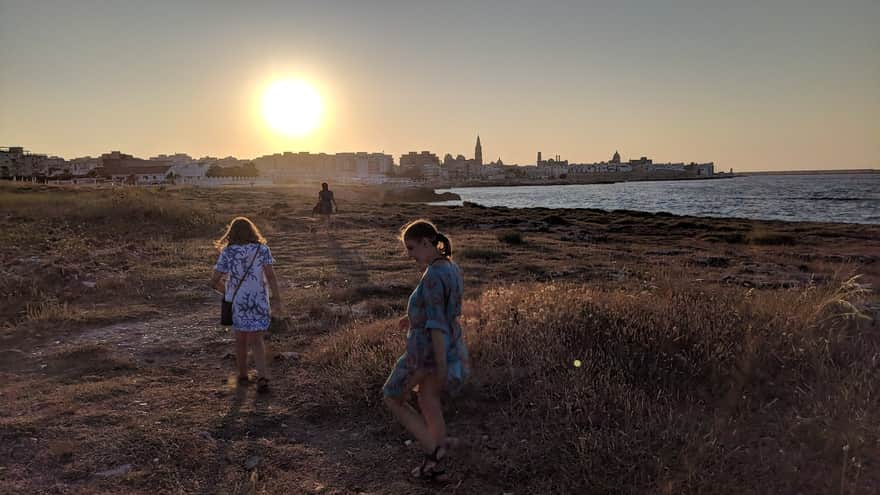
Nearby: Polignano a Mare and the most beautiful beach in Apulia
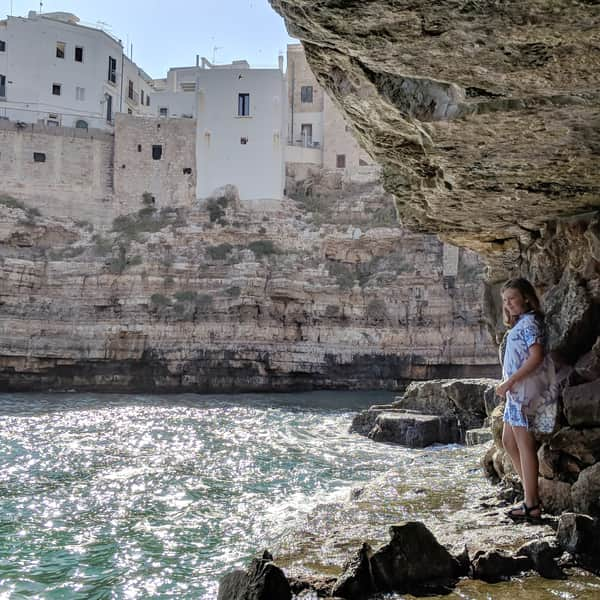
Polignano a Mare and the Most Beautiful Beach in Apulia
This charming, small town with white houses located by the emerald sea is considered one of the biggest attractions of the Italian region of Apulia. ...
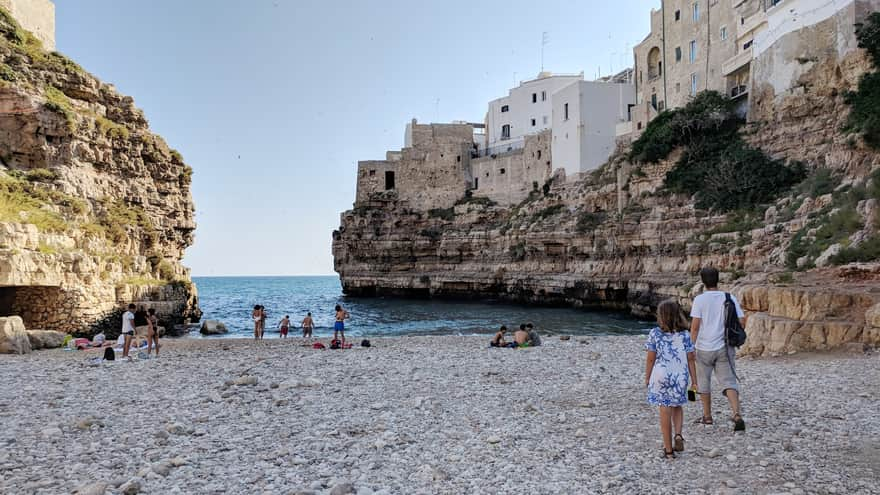
Publish Date:
More in the Region Włochy (Italy)
